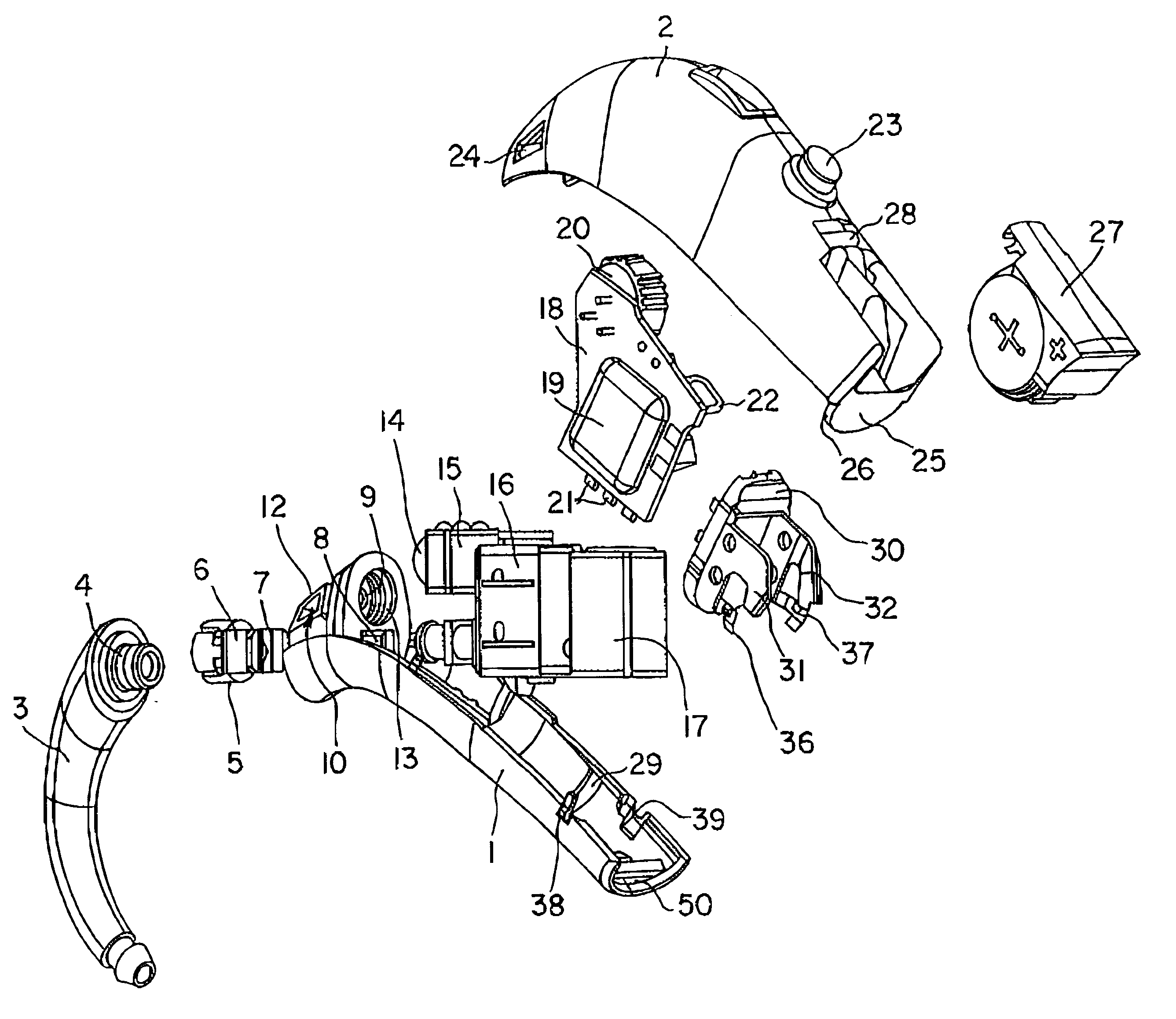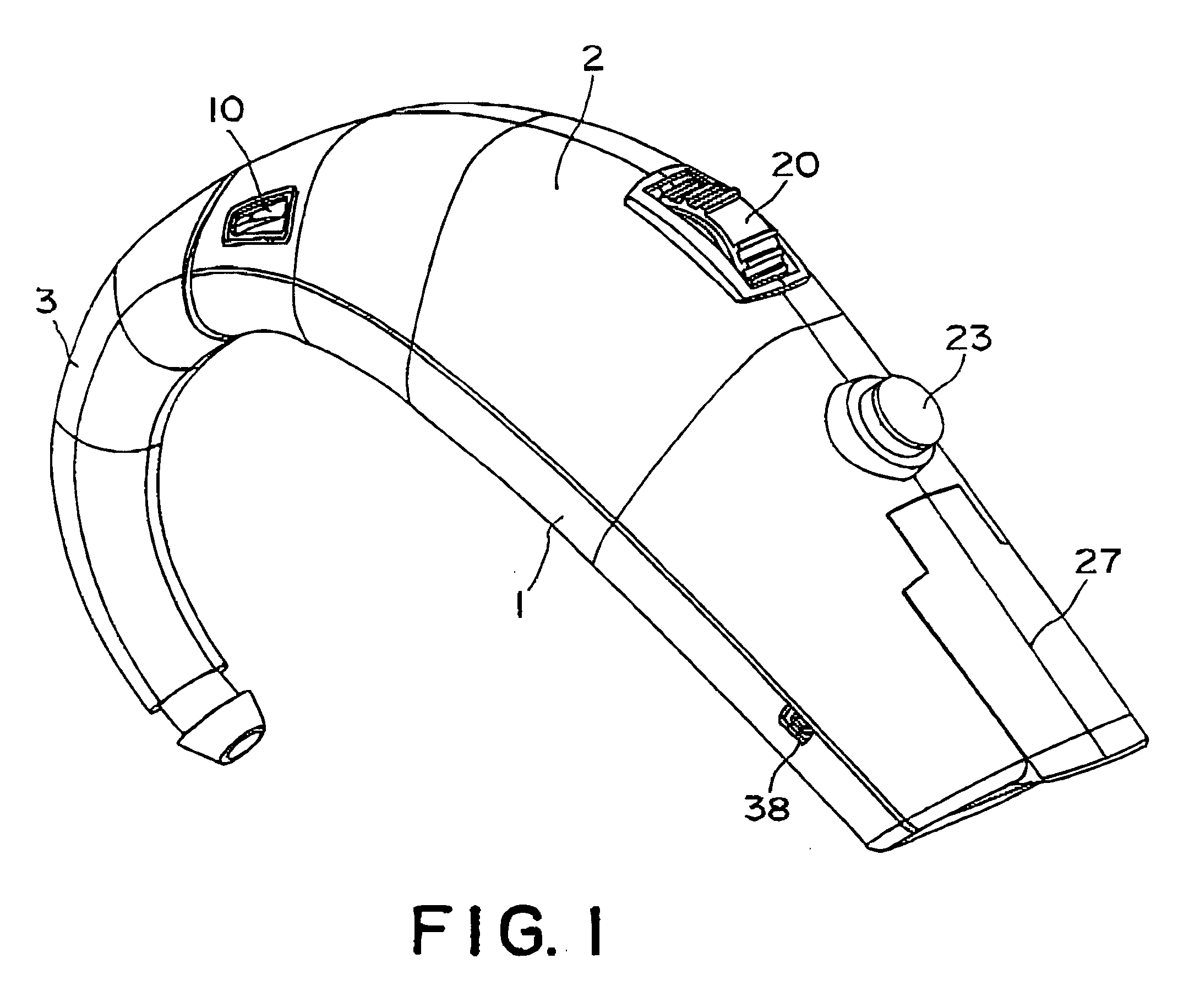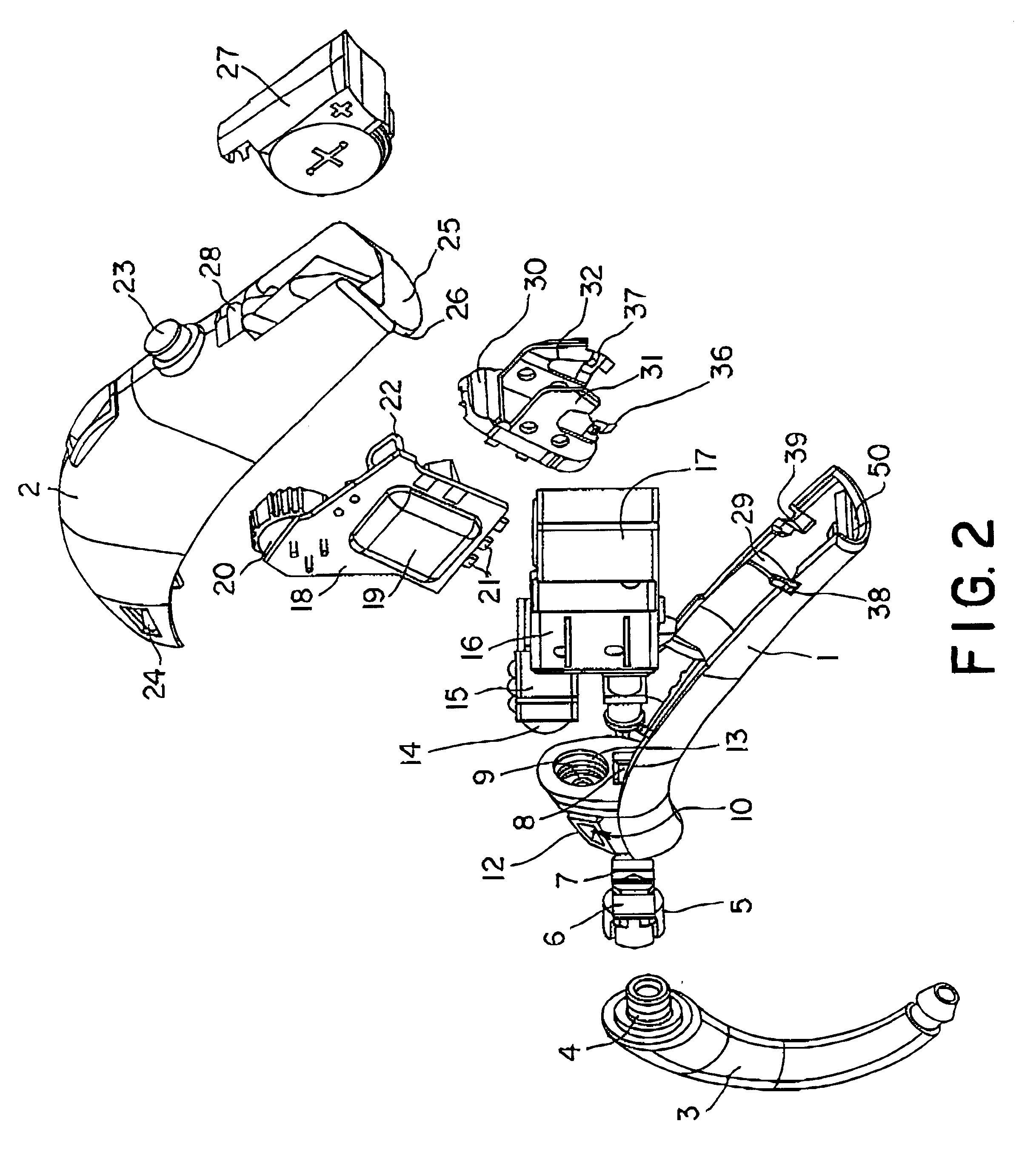Hearing aid
a technology for hearing aids and ear supports, applied in the direction of hearing aid mounting/interconnection, ear support sets, electric devices, etc., can solve the problems of more material, more material means more weight, and already stressed housing materials may break more easily
- Summary
- Abstract
- Description
- Claims
- Application Information
AI Technical Summary
Problems solved by technology
Method used
Image
Examples
Embodiment Construction
From FIG. 1 a hearing aid appears, which comprises a housing divided into two shell parts, a first shell part 1 and a second shell part 2. At the upper end of the housing a hook is mounted in an adapter part. An acoustic inlet opening 10 appears as well as a volume control 20, an activating button 23 and a battery drawer 27. An aperture 38 for accessing a battery terminal appears.
From FIG. 2 an exploded view of the hearing aid shown in FIG. 1 appears. The hook 3 comprises a circumferential recess 4 at the coupling end. It appears that the hook is mounted in an adapter part 5, which is mounted in an aperture in the first shell part 1 and is held in place by means of two flexible legs 6,7 having at their outer ends barbs cooperating with internal shoulders around the aperture 8 in the first shell part. The opposite end of the adapter 5 comprises four flexible wall parts separated by incisions and having internal barbs adapted to cooperate with the recess 4 in the hook 3.
The first shel...
PUM
 Login to View More
Login to View More Abstract
Description
Claims
Application Information
 Login to View More
Login to View More - R&D
- Intellectual Property
- Life Sciences
- Materials
- Tech Scout
- Unparalleled Data Quality
- Higher Quality Content
- 60% Fewer Hallucinations
Browse by: Latest US Patents, China's latest patents, Technical Efficacy Thesaurus, Application Domain, Technology Topic, Popular Technical Reports.
© 2025 PatSnap. All rights reserved.Legal|Privacy policy|Modern Slavery Act Transparency Statement|Sitemap|About US| Contact US: help@patsnap.com



